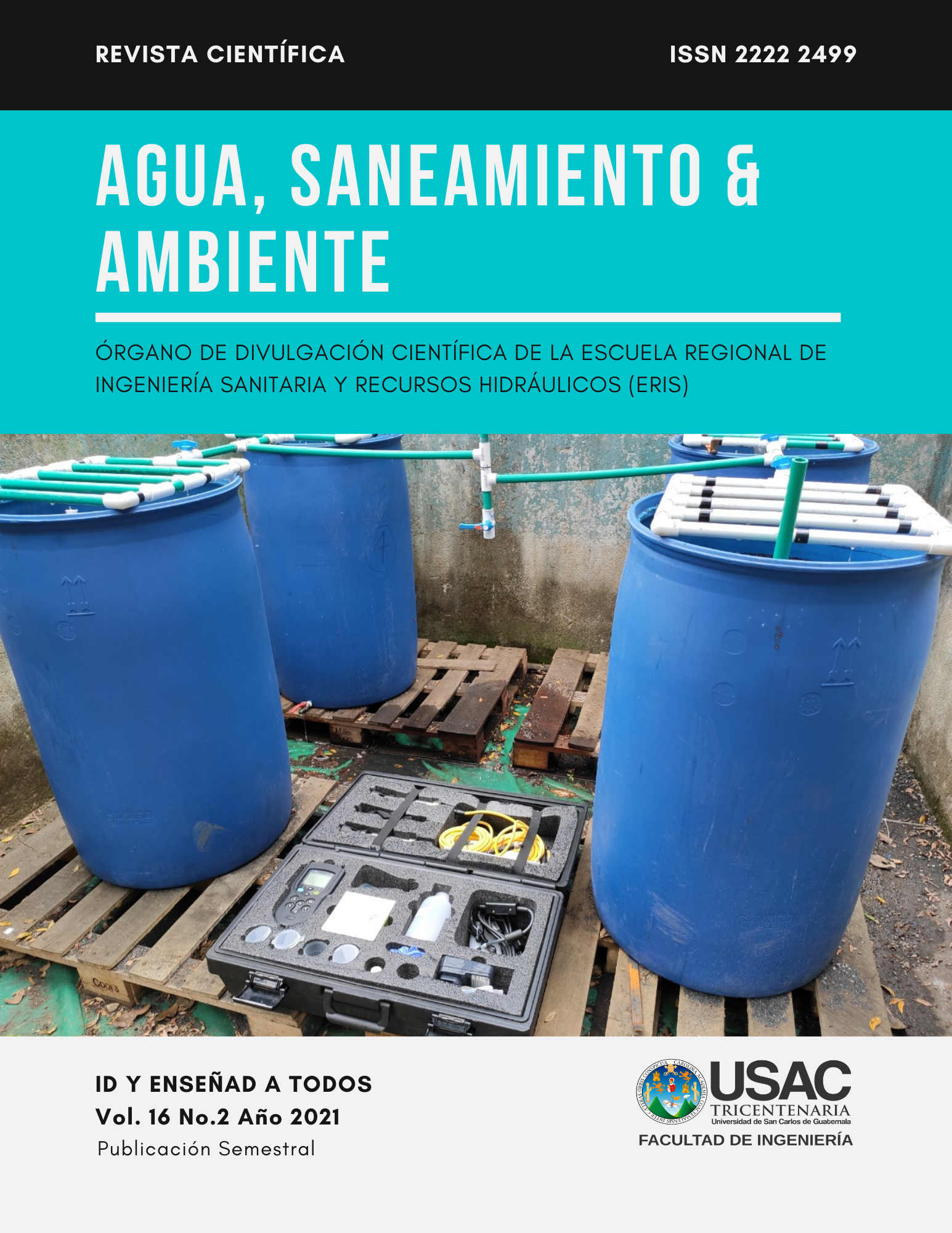Use of multi soil layering system as a secondary treatment of ordinary wastewater.
DOI:
https://doi.org/10.36829/08ASA.v16i2.1327Keywords:
Treatment plants, BOD, COD, TSS, sustainability, trickling filters, removal efficiency, rural areasAbstract
This article is based on experimentation with the Multi Soil Layering System (MSL), which constitutes a novel wastewater treatment technology, its characteristics make it ideal to be applied in rural areas as a centralized system. Previous research has shown promising results when treating domestic wastewater, removing large amounts of organic matter, suspended solids, nutrients, among other contaminants. The MSL is a low cost system that can be built with local materials, offering good performance and a simple and inexpensive operation and maintenance. It is used as a secondary treatment, requiring an area several times smaller than other technologies typically recommended for rural populations.
To carry out the study, four MSL pilots were built, which receive the effluent from an Upflow Anaerobic Sludge Blanket (UASB) reactor that has a previous pretreatment. Quality parameters are measured at the entrance and exit of the systems, such as BOD, COD, TSS, among others.
All pilots were able to comply with the limits established in the national law, and removal percentages of at least 75% were achieved for BOD, COD and TSS. However, these parameters are considerably better in some of the four pilots tested in the study.
Downloads
References
An, C. J. (2015). Multi-Soil-Layering Systems for Wastewater Treatment in Small and Remote Communities. Journal of Environmental Informatics. https://doi.org/10.3808/jei.201500328 DOI: https://doi.org/10.3808/jei.201500328
Baird, R., Rice, E. W., Eaton, A. D., Bridgewater, L., & Water Environment Federation. (2017). Standard Methods for the Examination of Water and Wastewater. American Public Health Association.
Chen, X., Luo, A. C., Sato, K., Wakatsuki, T., & Masunaga, T. (2009). An introduction of a multi-soil-layering system: a novel green technology for wastewater treatment in rural areas. Water and Environment Journal, 23(4), 255-262. https://doi.org/10.1111/j.1747- 6593.2008.00143.x DOI: https://doi.org/10.1111/j.1747-6593.2008.00143.x
Marrugat, J. (2012). Calculadora de Tamaño Muestral GRANMO del Instituto Municipal de Investigación Médica de Barcelona [Programa de cálculo online]. Recuperado 6 de abril de 2021, de https://www.imim.cat/ofertadeserveis/softwa re-public/granmo/
MINAE, & MINSA. (2006, agosto 9). DE-No 33601: Reglamento de Vertido y Reuso de Aguas Residuales. Recuperado 25 de abril de 2020, de http://www.pgrweb.go.cr/scij/Busqueda/Nor mativa/Normas/nrm_texto_completo.aspx?n Valor1=1&nValor2=59524
Sato, K., Iwashima, N., Wakatsuki, T., & Masunaga, T. (2011). Quantitative evaluation of treatment processes and mechanisms of organic matter, phosphorus, and nitrogen removal in a MSL system. Soil Science and Plant Nutrition, 57(3), 475-486. https:/doi.org/10.1080/00380768.2011.590944 DOI: https://doi.org/10.1080/00380768.2011.590944
Sato, K., Wakatsuki, T., Iwashima, N., & Masunaga, T. (2019). Evaluation of Long-Term Wastewater Treatment Performances in Multi-Soil-Layering Systems in Small Rural Communities. Applied and Environmental Soil Science, 2019, 1-11. https://doi.org/10.1155/2019/1214368 DOI: https://doi.org/10.1155/2019/1214368
Downloads
Published
How to Cite
Issue
Section
License

This work is licensed under a Creative Commons Attribution-NonCommercial-ShareAlike 4.0 International License.







